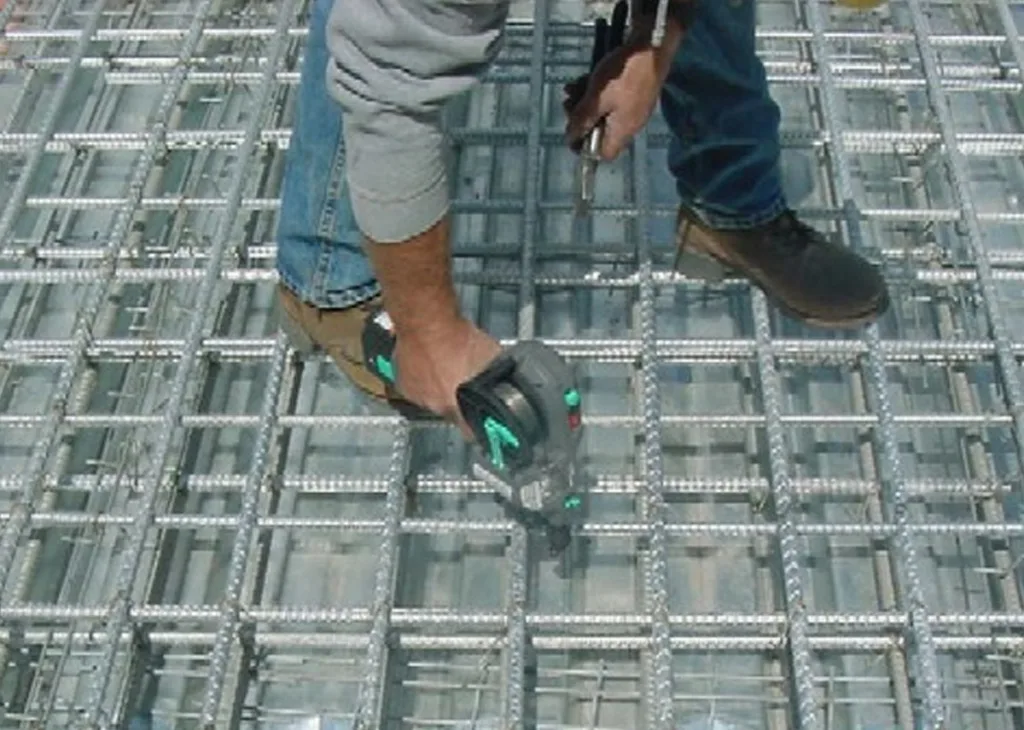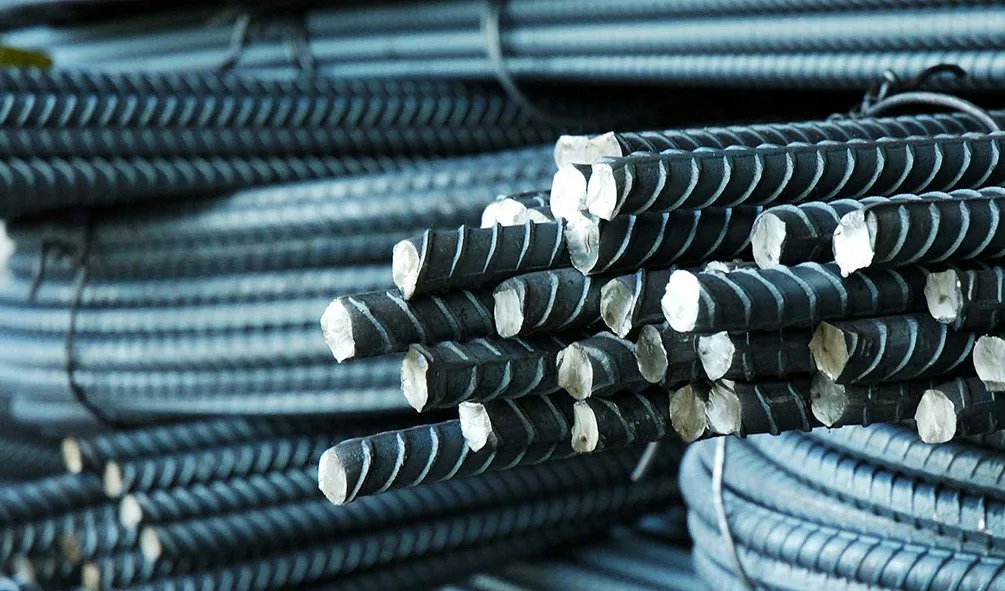Corrosion poses a multifaceted threat to buildings and structures, jeopardising their structural integrity, safety, and long-term durability. This process occurs as iron in steel reacts with oxygen and water, resulting in the formation of rust, which weakens the steel and ultimately leads to its failure. Additionally, corrosion weakens the steel reinforcement encased in concrete, which can result in structural failures, safety hazards, a reduced lifespan, and overall deterioration. Corrosion-resistant TMT bars can address these challenges. These bars are especially efficient in harsh environments where the risk of corrosion is high, ensuring that structures maintain their durability and safety over an extended period.
What are Corrosion-resistant TMT bars?
Corrosion-resistant TMT (Thermo-Mechanically Treated) bars are manufactured to resist corrosion, which is a common problem in construction due to exposure to moisture and environmental factors. Corrosion-resistant TMT bars are typically coated with a layer of zinc, epoxy, or other corrosion-resistant materials to protect the steel from rust and deterioration. This coating helps extend the lifespan of the TMT bars and ensures the structural integrity of the building over time, particularly in coastal areas or regions with high humidity.

Advantages of Corrosion-resistant TMT bars
- Protective Coating: These bars are coated with materials like zinc, epoxy, or other anti-corrosion coatings. This coating acts as a barrier, preventing direct contact between the steel surface and corrosive agents in the environment.
- Sacrificial Protection: Zinc coating, for example, corrodes sacrificially, meaning it corrodes before the steel does. This sacrificial layer of zinc protects the underlying steel, extending the lifespan of the bars.
- Enhanced Manufacturing Process: TMT bars undergo a special thermo-mechanical treatment during manufacturing, which enhances their strength and durability. This process makes the bars more resistant to corrosion.
- Resistance to Environmental Factors: Corrosion-resistant TMT bars are better equipped to withstand exposure to moisture, humidity, salt, and other environmental factors, which are common in coastal regions or areas with harsh weather conditions.
- Longer Lifespan: By preventing or delaying corrosion, these bars have a longer lifespan, ensuring the structural stability of a building over many years.
- Strength Retention: Corrosion can weaken standard steel bars over time. Corrosion-resistant TMT bars maintain their structural strength and load-bearing capacity.
How Corrosion-resistant TMT bars are manufactured?
Corrosion-resistant TMT (Thermo-Mechanically Treated) bars are manufactured through a specialised process that includes both the production of the steel and the application of anti-corrosion coatings. Here is an overview of how they are manufactured:
1. Raw Material Selection: High-quality raw materials, including iron ore, coking coal, and additives, are carefully chosen to create steel of the desired composition.
2. Iron Ore Reduction: Iron ore is processed in a blast furnace, where it’s reduced to molten iron. This molten iron is then further refined to produce high-quality steel.
3. Thermo-Mechanical Treatment (TMT):
- The steel is heated to a specific temperature.
- It is then rapidly cooled, which imparts the necessary mechanical properties to the bars, such as strength and ductility.
4. Anti-Corrosion Coating:
- The TMT bars are coated with anti-corrosion materials like zinc, epoxy, or other proprietary coatings.
- These coatings create a protective barrier against corrosion, safeguarding the steel from moisture.
5. Passivation (Optional): Some TMT bars undergo passivation, a process in which the surface is treated with chemicals to remove impurities and establish a passive layer that enhances corrosion resistance.
6. Cutting and Shaping: The treated bars are cut and shaped to the required dimensions, following industry standards and customer specifications.
7. Quality Control: Rigorous quality control measures are applied at various stages of manufacturing to ensure that the bars meet specified standards. This includes testing for mechanical properties and coating quality.
8. Packaging and Storage: The finished corrosion-resistant TMT bars are packaged in a way that prevents exposure to moisture and environmental factors during transportation and storage.
It’s important to note that the manufacturing process may slightly vary depending on the manufacturer and the specific product requirements.

Types of Corrosion-resistant TMT bars
Epoxy-Coated TMT Bars:
Epoxy-coated TMT bars are equipped with a protective layer of epoxy resin applied to their surface. This epoxy coating acts as a robust barrier, effectively shielding the underlying steel from moisture and corrosive substances. It is particularly efficient in environments where exposure to water and chemicals poses a significant concern. Epoxy-coated TMT bars find common use in structures like bridges, parking decks, and buildings situated in areas with high humidity or chemical exposure. They serve the crucial purpose of preventing corrosion and ensuring the structural integrity is maintained over an extended period.
Zinc-Coated TMT Bars:
Zinc-coated TMT bars undergo a hot-dip galvanizing process where they are immersed in molten zinc. This process results in the formation of a durable zinc layer that provides sacrificial protection. In the event of any scratches or exposure of the steel core, the zinc coating corrodes first, effectively safeguarding the structural integrity of the steel within. These bars are particularly well-suited for structures exposed to moisture and can be reliably employed in marine environments, coastal areas, and regions where corrosion from atmospheric elements is a significant concern.
Stainless Steel TMT Bars:
Stainless steel TMT bars are inherently corrosion-resistant due to their high chromium content, which forms a passive oxide layer on the surface that prevents rusting. These bars exhibit exceptional durability and are ideal for environments with high humidity, salt exposure, and acidic conditions. They find common applications in marine structures, chemical plants, and areas with aggressive chemical agents, where the inherent resistance of stainless steel makes it the preferred choice for long-lasting structures.
Corrosion-Resistant TMT Bars with Special Alloys:
Some manufacturers enhance the corrosion resistance of TMT bars by incorporating specific alloying elements like copper or nickel. These alloyed TMT bars are engineered to provide superior resistance in demanding or corrosive environments. They can be customized to meet specific project requirements and offer an extra layer of protection against corrosion, making them suitable for applications with unique or extreme challenges.
Corrosion-Inhibiting TMT Bars:
Corrosion-inhibiting TMT bars may incorporate additives in the concrete mix during construction. These additives are chemical compounds that slow down the corrosion process by reducing the rate of rust formation on the steel surface. This approach is a preventive measure and is particularly useful in environments where the likelihood of corrosion is moderate but still needs to be effectively managed.

How to select the right Corrosion-resistant TMT bars ?
Selecting the right corrosion-resistant TMT (Thermo-Mechanically Treated) bars is crucial for construction projects. Here’s how to make the right choice:
- Grade of TMT Bars: Opt for TMT bars with a higher corrosion resistance grade, such as Fe 500D, Fe 550D, or Fe 600. These grades are more resistant to corrosion.
- Coating: Look for TMT bars with anti-corrosion coatings, such as epoxy or zinc, which provide an extra layer of protection against rust and corrosion.
- Certifications: Ensure that the TMT bars are certified by relevant standards and authorities, like BIS (Bureau of Indian Standards) in India, to ensure their quality and corrosion resistance.
- Chemical Composition: Check the chemical composition of the TMT bars to ensure it meets the necessary standards for corrosion resistance. Pay attention to elements like chromium, copper, and phosphorus.
- Environmental Conditions: Consider the specific environment where the TMT bars will be used. For coastal areas or regions with high humidity, you may need TMT bars with higher corrosion resistance.
- Consultation: Seek advice from a structural engineer or construction expert who can assess your project’s requirements and recommend the most suitable corrosion-resistant TMT bars.
Applications of Corrosion-resistant TMT bars
Corrosion-resistant TMT (Thermo-Mechanically Treated) bars are widely utilized in construction and infrastructure projects that demand protection against corrosion. They serve various critical applications, including:
- Building Construction
- Bridges and Flyovers
- Coastal Structures
- Dams and Irrigation Structures
- Industrial Facilities
- High-Rise Buildings
- Residential Complexes
- Parking Structures
- Tunnels and Underground Structures
- Airport Facilities
- Water Treatment Plants
- Seismic Zones.
- Heritage Structures
Conclusion
Corrosion-resistant TMT bars have emerged as a crucial solution in the construction industry, safeguarding structures from the detrimental effects of corrosion, which can compromise safety and longevity. By incorporating innovative metallurgical techniques and coatings, these bars not only enhance the durability and strength of constructions but also significantly reduce maintenance expenses over time. As urban development intensifies and environmental factors pose ever-increasing challenges, the adoption of corrosion-resistant TMT bars is paramount.
Image Source: moirasariya.com, madhavkrggroup.com, maantmt.com, primegoldgroup.com

